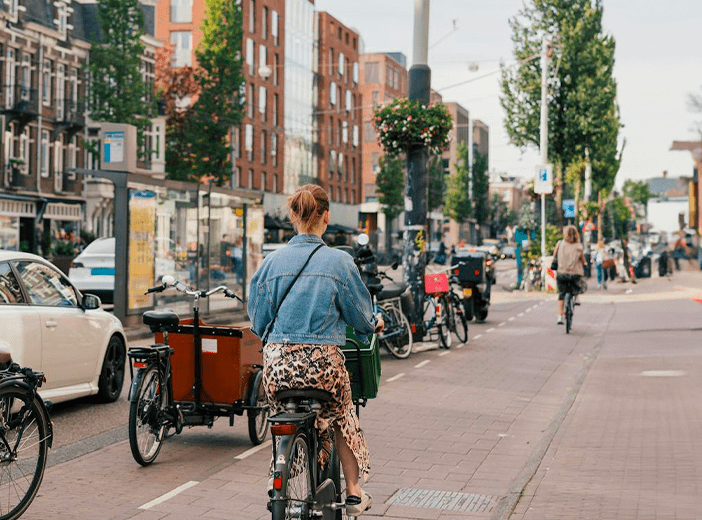How digital twins can transform smart cities
While smart cities have been with us for a while, they are always evolving and moving forward. Digital twins are one of the latest innovations, but what are they and how do you build one? To find out we talked to George Reed of digital twin and smart solutions provider Siradel.

Technology has the power to transform how cities operate, enabling greater efficiency, a better experience for visitors and residents, more sustainable operations and better decision-making.
Data is the vital component to building these smarter cities, flowing between internal and external systems and being shared with employees, partners, and citizens. How can cities innovate to meet their objectives using data? To find out, we interviewed George Reed, Senior VP of Sales and Marketing, NORAM, at Siradel. Siradel is an international technology company and thought leader with 30 years of expertise in geodata production, wireless and network infrastructure planning, 3D digital twins and smart city planning.
What are the key challenges facing cities today, and how does becoming a smart city help overcome them?
We’re living in an increasingly urban world – which opens up great opportunities but also brings challenges around making cities livable, sustainable, and thriving spaces. That means cities and municipalities need to tackle issues such as decarbonization, traffic management, mobility, and climate change. This is a constant process, as new ways of working, moving, interacting, and living emerge. We’ve also seen new risks, like COVID, appear, alongside more traditional ones such as flooding.
Technology enables cities to monitor exactly what is happening in real-time, provide new services and experiences to citizens and businesses and make better decisions. Smart city data can come from a wide range of sources, and it is vital that it is aggregated to provide municipalities with a transversal view of all the city’s challenges, risks and opportunities.
What is a digital twin and how does it help smart cities?
A digital twin is a data aggregation platform that brings together data from multiple sources and displays it in an easy to understand, visual way. It starts with a digitized model of the current environment and then overlays it with datasets. These datasets can be from the city itself or partners, such as monitoring data from environmental agencies, static data from a census bureau, IoT data or climate information, for example.
Sharing data from a digital twin makes it easy both to see what is happening now, but also allows cities to run simulations about what might happen in the future. For example, every city is looking to meet decarbonization targets. By building a digitized model based on all relevant datasets, the digital twin can give an accurate snapshot of current levels of CO2 across the city. If you then add in potential projects designed to reduce carbon emissions you can forecast their impact, enabling smarter decisions around sustainability. Or you could model what happens if you create a bus lane and see how it will affect journey times and pollution levels.
What’s critical is that value is extracted from data, people can understand exactly what the data is telling them, and that data is actionable. That’s why our 3D digital twins give a complete view of a city, port, or campus. You can see what is happening in multiple dimensions, at ground level or at particular heights and include factors such as wind when measuring pollution – or even see if Wi-Fi will reach up to a certain floor in a building.
Do you have examples of where digital twins and visualization have delivered concrete benefits?
Digital twins are not new – they’re already extensively used within industry to model machines such as jet engines or robots, enabling manufacturers to understand usage and when they will need maintenance, for example.
When it comes to adoption by cities, they are in their early stages. All the components of a digital twin (maps, data, technology solutions) are in place, but are sometimes not yet joined across departments to create a transversal ecosystem.
However, those cities that have already embraced them are seeing tremendous benefits. The Angers Loire Metropole in France created a digital twin built on its existing, connected infrastructure. By modeling energy usage, it was able to make changes that reduced its costs by two-thirds. The Paris digital twin is the foundation of the region’s Smart Services platform, which brings together a huge number of datasets to create a 3D, interactive visualization available to all, including citizens. One use case that has been particularly successful is about identifying potential sites for solar panels. Building owners can access the digital twin and visualize the number of panels that will fit on their roof and simulate the amount of energy that can be generated. There are even links to external resources, such as suppliers and solar panel installers to make the whole process of installing green energy really simple.
How do you see the smart city market developing over the next five years?
Over the next five years I believe digital twins will become a fundamental capability for smart cities, enabling them to plan better and make more informed decisions. Cities understand that they have rich data sources – they just need the tools to make sense of, manage and share it effectively. Digital twins allow cities to take advantage of their data to meet their objectives, whether that is cost reduction, efficiency, decision-making or innovation. They can become greener, reduce their carbon footprint and address economic and social disparities.
Therefore, I see the use of digital twins growing and becoming even easier to use. For example, we’ve added augmented reality and virtual reality to our platform so that users can simply jump into the digital twin and experience it through their headset or phone. There’s also likely to be greater collaboration – internally across departments to break down data silos, and also between cities and the private sector.
It’s a really exciting time to be involved in smart city technology – data sharing and digital twins will help cities to innovate and successfully meet their needs – and the needs of their citizens going forward.




